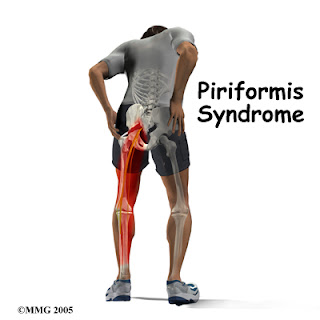
What is Piriformis Syndrome?, health tips and lifestyles, Muscles injuries can happen to anyone and at any levels. For those whose daily activities demand particular sitting or standing positions, lifting stuffs and moving things, it may be a common risk. On the other hands, people with various physical demands during exercise or work can also have this risk. Muscles injuries can actually be avoided when one does exercise regularly and the flexibility of muscles are retained. However, not all of us have this luxury –and budget- to work out. Although it seems simple, muscles injuries can turn to be a serious accident that causes nerve system disorder. In the worst case, some surgery treatments are necessary to do, to revitalize muscles and nerve functions.
Symptoms and Signs
You may not be familiar yet with the technical terminology of piriformis syndrome. This is a condition where pifiromis muscle presses the sciatic nerve. It belongs to the special neuromuscular disorder that involves both muscle and nerve on the area of hip joint. What muscle is involved here? We commonly recognize this as the muscle on the top of the hip joint near the buttock. It is where the lower part of our body bases its movements. We turn to various directions, bend, walking flat, going up and down the stairs, changing position from sit to stand and vice versa, all are based and related to this muscle. The sciatic nerve is the nerve that goes along the above muscle and down to our leg. It lies all the way down of the back leg ad reaches in our feet, where the nerve breaks down into smaller branches.
How do we know that there is a problem on this area? One on the most common signs is the feeling of numb in the buttocks. In some cases, it can turn into a painful feeling along the area of buttock, back of the leg and goes down to the feet. Why does this happen? It is basically due to the pressure caused by the muscle on the nerve. When people sit too long over a period of time, for driving, typing, and other working demands, this symptoms can occur. But, not all of problems on sciatic nerve are due to muscle pressure. To be sure of what happens, you need to get examined and diagnosed.
Diagnosis and Treatment
When you are experiencing the above symptoms and your daily routines are having the risks of suffering from such injuries, it is important to know how you will be examined and diagnosed. In the cases of piriformis muscle and sciatic nerve disorder, the examination will mostly be based on your health record and the symptoms you feel. The diagnosis then would be concluded from that. The physician will also look for record of physical trauma or injuries especially during heavy tasks like when exercising or working. As explained above, some symptoms may turn out to be similar but the causes are different. In order to get more accurate diagnosis, MRI tests may be recommended.
How about the treatment of this disorder? Normally, special therapy will be needed to make piriformis muscle becomes more relaxed and decrease the pressure on the sciatic nerve. It can include some stretching and exercises guided by a physiotherapist. In addition to that, injections may also be given to relieve the pain. Another possible treatment involves applying ice or using an infrared lighting to help muscle relaxed and lose. Electric current in low up to mild intensity may also be applied if necessary. The last treatment is through surgery.
Thanks for read this article, you can read our other article such as menopause symptoms.
